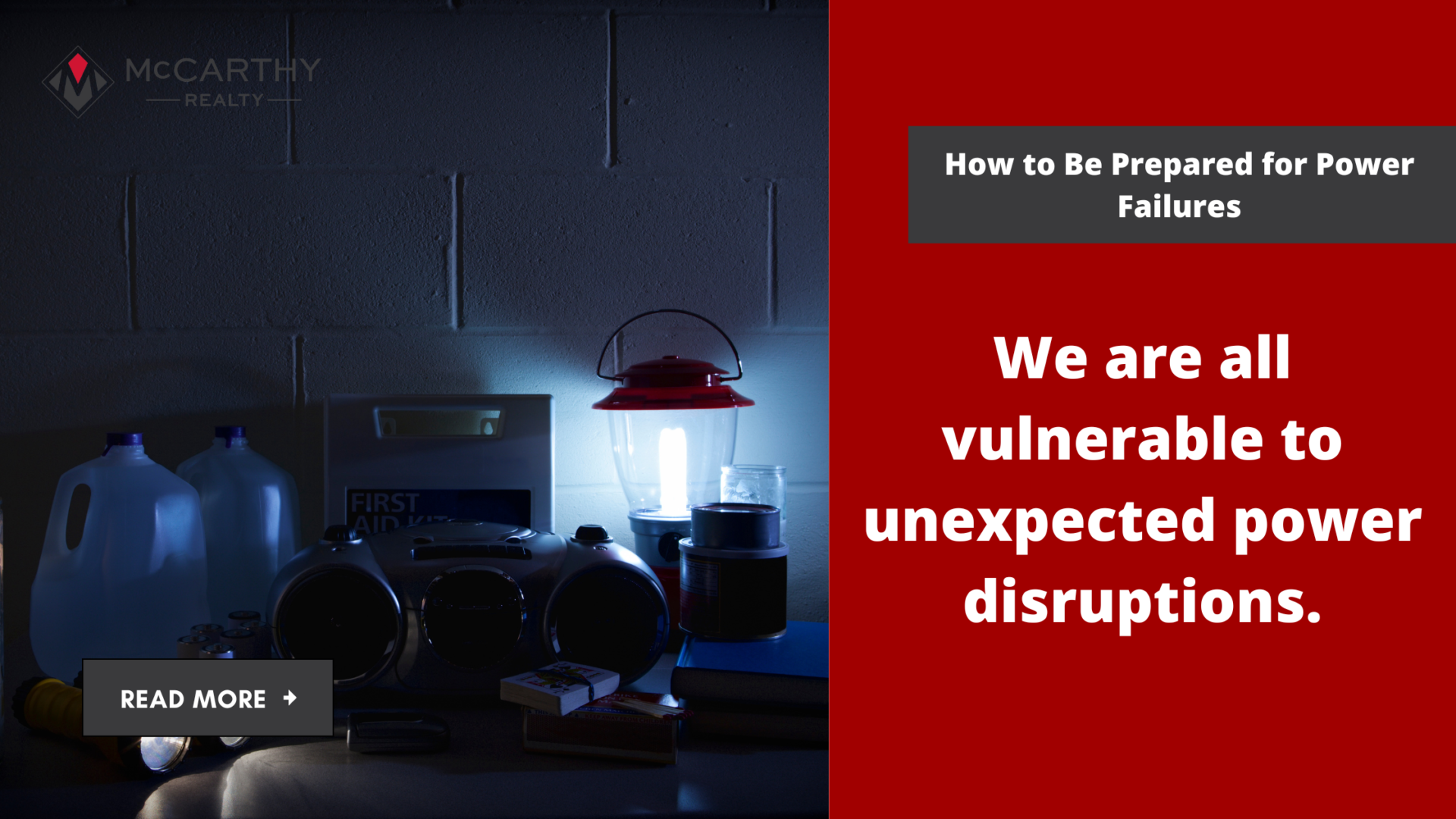
Keep yourself and your belongings from being damaged by following these tips for surviving a power outage.
Outages can stay from a few minutes to several hours. You might receive advance notice of possible power outages—for example, if the weather forecaster predicts strong winds, torrential rains, snowfall, and ice accumulation. However, a power outage can come with little or no warning.
A squirrel’s mischief or an uprooted tree could take out your power lines—regardless of the cause, you need to be ready for such an event at home. Here are some tips on what you should do:
Assemble an Emergency Preparedness Kit
It’s hard to be efficient when you hunt for necessities in a dark house during an outage. Make life more manageable by storing up these items:
- Basic first-aid kits
- Battery-operated fans
- Cash
- Flashlights (one for each family member)
- Garbage bags
- Hand sanitizer, baby wipes & dry shampoo
- Toolkit
- Whistle to signal help
Make sure to enclose a wide range of backup batteries for your flashlights, radios, and clocks—all the key tools or appliances that run on battery backup. If you want to keep batteries home, store them in a dry place (away from heat and moisture) with the contacts wrapped or separated.
And don’t forget to tag your kit and keep it where it’s easy for everyone in the family to access. Check its contents every six months—and replace expired items if necessary—to ensure everything is up-to-date.
Stock Up on Water
Although it is far-fetched that your municipal water supply will shut down, this has happened in the past. For example, Des Moines—home to more than 200,000 people and Iowa’s capital city—was without running water for 12 days during a flood in July 1993 when its treatment facility was overwhelmed by floodwater. If you depend on electricity to pump water from your well, what happens when the power goes out?
To outlast for at least three days without access to sanitary water, the National Safety Council recommends stockpiling a gallon of water per person. A family of four would need 12 gallons to remain hydrated during an emergency lasting more than 72 hours. Also, bring extra water for cooking, cleaning, personal hygiene—and your pets.
You can buy bottled water at a supermarket to store potable water for an emergency. But if you want to conserve money, fill sterile soda bottles or milk jugs with tap water instead—disinfect the containers first.
Wash the containers in superheated, soapy water and then sanitize them with a bleach solution (1 teaspoon of bleach per gallon of water). Leave the solution inside for two minutes before pouring it out. Before filling it with tap water, rinse the container thoroughly. Screw on the lid firmly and date it, then store it in a cool place away from direct sunlight.
Stockpile Nonperishable Foods
When the store shelves empty as soon as someone announces that snow is coming, keep your pantry stocked with shelf-stable foods so you won’t have to fight through crowds.
Good options include peanut butter (or any nut butter), nuts, kernels, and peanuts; powdered or evaporated milk; packaged tuna fish; canned meat such as beef or chicken bouillon—anything that doesn’t require cooking. Include instant coffee, tea, and powdered drink mixes; comfort foods such as cookies and chocolate; pet food for four-legged friends (and two-legged ones, too!) and a manual can opener or scissors to open those pesky cans.
Don’t buy more food than you can store and use in a reasonable time. Some discount stores sell food about to expire, so ensure the expiration date isn’t too far off, or you might waste all your money on moldy loaves.
Fuel Up and Charge in Advance
Because gas stations power their pumps with electricity, you must fill your car’s tank before the storm hits. You may want to get some extra gasoline for your backup generator at the same time. To make the most of your supplies during an emergency, fully charge all your electronic devices and plug-in hybrid cars.
If you plan to cook with a propane stove, gas grill, or charcoal barbecue during an emergency, keep extra containers of propane and other sources of fuel in your garage. And if your home includes a fireplace that burns wood instead of logs (as opposed to pellet), make sure there’s always plenty on hand.
Prep for Cold Temperatures
Blankets are a must in readying for power outages. But suppose your region of the country experiences severe winter weather. In that case, you should also consider including quality sleeping bags (one per family member) as part of the emergency supplies at home. The inner shell of a sleeping bag holds warmth, while the outer shell protects against moisture and cold. Down-filled versions are extremely effective at trapping heat—but can be expensive. You can find less expensive synthetic-filled sleeping bags that work just as well. You can also purchase a combination of the two, often the best option for saving money while maintaining quality and comfort. If you plan on using your sleeping bag in an emergency, ensure it’s clean and dry before storage.
Emergency thermal blankets made of thin aluminized polyester film are an effective and inexpensive option if storage space is limited. They’re windproof and waterproof, so they keep you warm without sacrificing comfort. If you have a few of these compact warmers in the car for emergencies when away from home base, consider keeping some extra firewood around if your home has a fireplace or wood stove that during power outages can be utilized.
